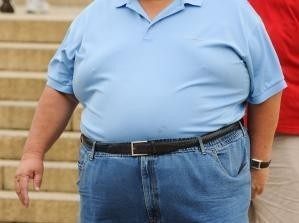A new study has given overweight people another excuse for not losing the pounds – by blaming it on aircraft and traffic.
Research by the Karolinska Institute in Sweden claims that the stress of constant traffic noise such as living under a flight path or by a main road could programme the body to lay down more fat because it thinks it is heading for a time of crisis where resources may be scarce, the Daily Telegraph reports.
The authors found that for every five decibels above the average of 45 for traffic noise, residents gained an extra 2 millimetres around their waist. With noise levels measuring over 75 decibels around Buckingham Palace, it suggests The Queen may even be affected by underlying stress related weight gain.
Tottenham Court Road in the centre of London regularly records noise of up to 80 decibels which calculates at an extra 1.4 cm larger waist than if they lived somewhere quiet.
The worse transportation to live near for those in search of a svelte figure was aircraft, with researchers saying they found living under a flightpath, combined with road and railway noise, doubled the risk of being obese.
“Traffic noise is a common and increasing environmental exposure, primarily due to ongoing urbanisation and growth of the transport sector,” said lead author Dr Andrei Pyko.
“Road traffic is the dominating source, followed by railway and aircraft noise. Health effects related to traffic noise are widespread and span from annoyance, sleep disturbances and changes in stress hormone levels to adverse effects on the cardiovascular system.
“Our results suggested associations with waist circumference primarily in the age group below 60 years.”
The findings were based on studying 5075 people living in five suburban areas and rural areas around the Stockholm and calculated how much road traffic, rail and aircraft noise the residents had been exposed to since 1999.
The subjects, aged between 43 and 66, also completed a detailed questionnaire covering significant factors to weight gain such as lifestyle, current state of health, psychological pressures, job stress and insomnia. They were also questioned about environmental noise pollution to see if it was something that bothered them.
Their results suggested that people wanting to lose weight should consider moving to the countryside where they can get peace and quiet but also raised the possibility that people living in urban areas could be more susceptible to diabetes because fat which builds on the waist is one of the most harmful types of fat.
Obesity is considered a serious problem in Britain, with a quarter of adults classed as obese compared with less than three per cent in the 1970s. This trend is set to continue, with a third of Brits set to be classed as porkers by 2030.
It is not the first study to link traffic noise to stress and health: a recent study in Copenhagen found that living in noisy areas increased the risk of those over 65 having a stroke. And scientists at Imperial College, London found that hospital admissions for stroke, heart and circulatory disease had a direct correlation between those who lived in areas blighted by aircraft noise.
But professionals have warned that it is too soon to start blaming muffin tops and flabby midriffs on the morning rush hour. Dr Anna Hansell who works at the Centre for Environmental Health at Imperial College said:
“While interesting, this is one of the first studies to look at the link between waist size and traffic noise, so it’s definitely too soon to be able to blame your increasing waist-line on traffic noise!
“Also, the size of the reported associations with traffic noise are small. Eating a sensible diet and taking regular exercise remains the best way to help prevent a midriff bulge.
“A number of recently published studies have found associations between transport noise and high blood pressure, heart disease and stroke.”
The research was published in the BMJ journal Occupational & Environmental Medicine.

COMMENTS
Please let us know if you're having issues with commenting.